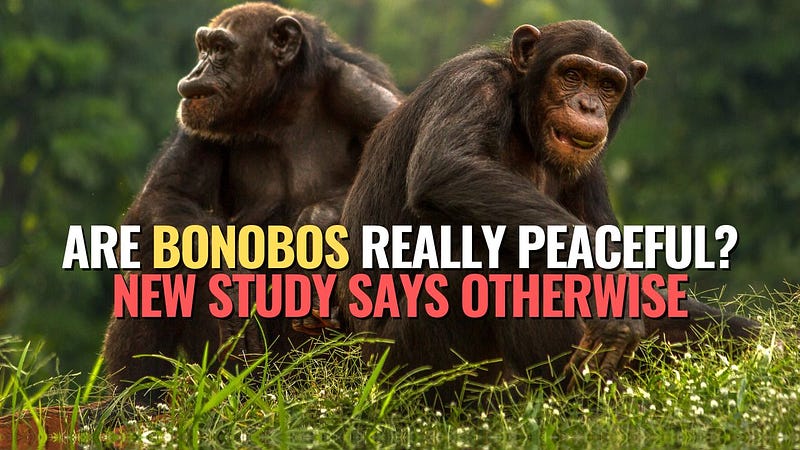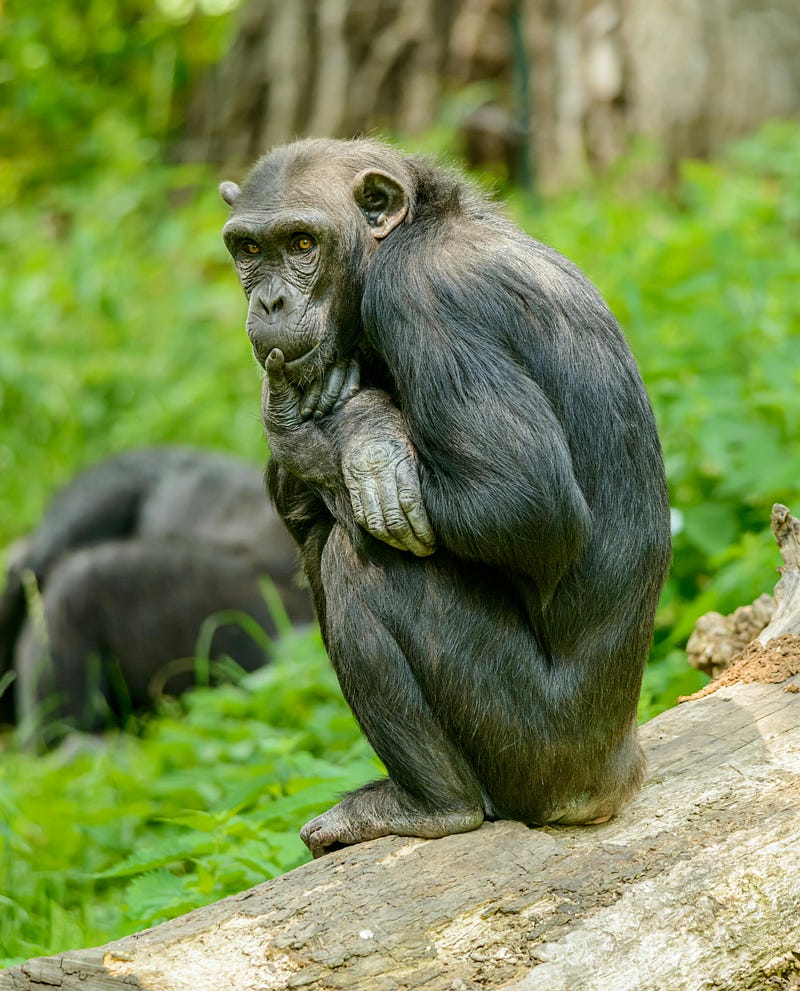Bonobos: Challenging the 'Lovers, Not Fighters' Myth
Written on
Understanding Bonobos
Bonobos, scientifically known as Pan paniscus, are a fascinating species of primates found exclusively in the lowland rainforests along the Congo River in the Democratic Republic of Congo. Often referred to as pygmy or black chimpanzees, these creatures exhibit a combination of unique physical traits and social behaviors.

Bonobos share many similarities with chimpanzees, both in appearance and lifestyle. However, they are generally more slender, with longer limbs, a narrower chest, and a rounded head featuring a less pronounced face. Adult bonobos typically reach around 115 cm in height, with males weighing close to 40 kg and females slightly over 30 kg.
Bonobos and Their Social Dynamics
Traditionally, bonobos have been viewed as more peaceful than their common chimpanzee counterparts, with some studies suggesting they prefer sexual interactions over aggression and primarily hunt small rodents. This perception painted a picture of bonobos as non-aggressive beings that do not form hunting groups.
Recent Findings on Aggression
However, recent research has called this image into question. A team from the Max Planck Institute for Evolutionary Anthropology in Germany found that bonobos do engage in hunting and have been observed consuming monkeys from different species. The study highlighted that female bonobos often play critical roles in these hunting groups.
In April, an international team of researchers published their findings in "Current Biology," revealing that male bonobos exhibited a greater frequency of aggressive behaviors compared to male common chimpanzees. "These findings provide a more complex understanding of aggression in our closest living relatives," commented Prof. Martin Surbeck from Harvard University, who contributed to the study.

Nuances of Aggression Among Primates
The researchers emphasized the need for varied definitions and metrics for aggression. Both male bonobos and common chimpanzees display distinct aggression patterns. While chimpanzee males often force females into mating and may even kill rivals, bonobos rarely resort to such extreme actions.
Nonetheless, when evaluating general aggression indicators, bonobos surpassed chimpanzees. Studies show that male bonobos engage in approximately three times as many aggressive acts towards their peers compared to males in chimpanzee groups, even when accounting solely for physical confrontations.
Researchers concluded that while common chimpanzees exhibit lethal aggression, bonobos are more involved in frequent but less severe conflicts. This difference may be attributed to their contrasting coalition-building strategies. Chimpanzees depend on strong male alliances for territorial defense and reproductive success, leading to a lower incidence of fights. In contrast, bonobos are more independent, allowing them to engage in more disputes without significant repercussions.
"I believe this study highlights the importance of recognizing the varying forms of aggression and the selective pressures that shape them," Prof. Surbeck concluded.
Exploring Bonobo Relationships
The first video, Fixation: Hyper-Sexual Apes, delves into the sexual behaviors of bonobos, illustrating their complex social interactions and the role of sex in their communities.
The second video, Bonobo Love | Nat Geo WILD, provides insights into the affectionate nature of bonobos and their unique social structures, challenging common misconceptions about their behavior.
In summary, the evolving narrative around bonobos suggests that while they may engage in affectionate behaviors, their social dynamics are far more intricate and deserving of deeper study.